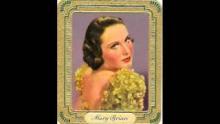Franz Bauer Quintet 'Plüschtier'
recorded in 1999 in Holland
Franz Bauer vibraphone/marimba
Michael Anderson tpt
Michael Thieke alto-sax; clarinet;alto-clarinet
Johannes Gunkel bass
Jim Black drums
www.franzbauer.com
also available on itunes...
- Read more about Franz Bauer Quintet 'Plüschtier'
- 2 comments
- Log in or register to post comments






